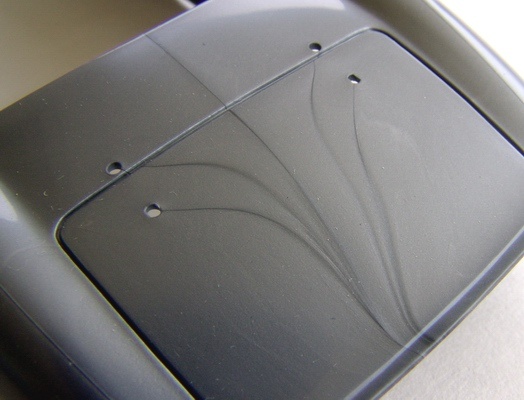Making injection molded prototypes is both an art and a science. A high level of technical expertise and attention to detail is required to prevent small mistakes that cost the company a lot of money when producing novel parts in small batches. Some molding defects may be difficult or costly to fix. By adjusting the molding process, other situations can be avoided without the need to redesign the mold or replace other production equipment. Often, these defects can be relatively easily avoided by simply adjusting the mold’s flow rate, temperature, or pressure.
The surface defects of the products we discussed include:
Flowline
Streamlines are stripes, patterns, or lines – usually appearing in colorless colors on the prototype parts due to the physical path and cooling curve of molten plastic flowing into the mold cavity of the injection mold.

Causes and solutions
Streamline defects are caused by changes in the flow rate of molten plastic as it changes direction through the contour and bends within the mold. This can also happen when the plastic flows through parts with different wall thicknesses, or when the injection rate is too low and the plastic solidifies at different speeds.
Here are some common solutions:
- Increase injection speed, pressure, and material temperature to ensure material filling mold before cooling
- Reposition the die gate to leave more space between the die gate and the die coolant to help prevent material from cooling prematurely during the flow
- Increase nozzle diameter to increase the flow rate and prevent premature cooling
Burn mask
Burn marks usually appear black or rust-colored on the edges or surfaces of molded plastic parts. Unless the plastic is burned to the point of degradation, burn marks usually do not affect the integrity of the part.
Causes and solutions
A common cause of burning marks in injection-molded parts is residual air or resins itself overheating in the mold cavity during the injection. Too fast an injection or the heating of the material often leads to overheating, which can lead to burns. Consider the following preventative measures to avoid burn marks in molded components:
- Reduce melt and die temperatures to prevent overheating
- Reduce the injection speed to limit the risk of air entering the mold
- Expand vent and gate to allow residual air to escape from the mold
- Shorten die cycle time to avoid any residual air and resin overheating
Jetting
Jetting is a deformation in a molded part that may occur when an initial “jetting” of molten material is injected into the mold cavity and then begins to solidify before the mold cavity is filled.
Causes and solutions
The main cause of jetting is excessive injection pressure. When molten polymer or other material is injected through a small gate with high pressure, it is usually ejected rapidly from the gate rather than gradually filling the mold cavity. As the initial material line cools to the mold wall and begins to harden, the remaining mold material pushes against it, leaving an indentation on the surface of the final part.
Here are some common solutions:
- Reduce injection pressure to prevent rapid injection of material into the cavity
- Increase the material and die temperatures to prevent premature solidification of the initial material jet
- When designing an injection mold, the gate position should allow the material to pass directly through the mold rather than lengthwise
